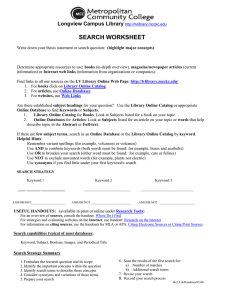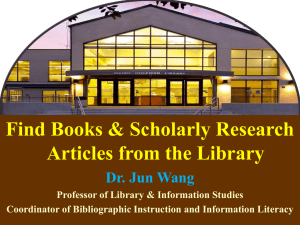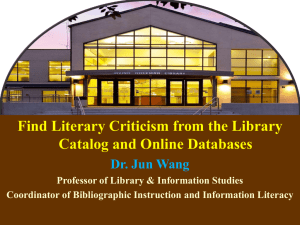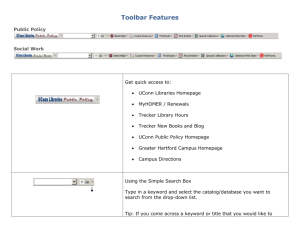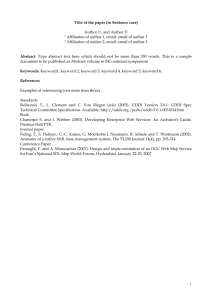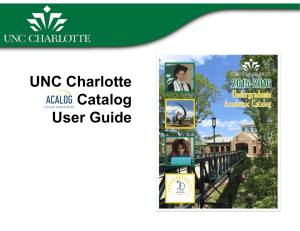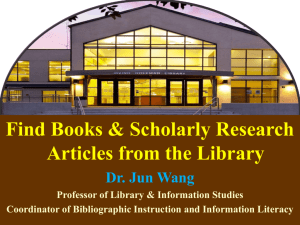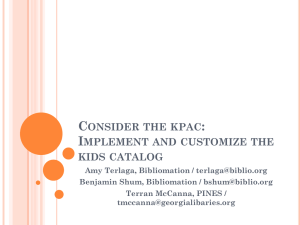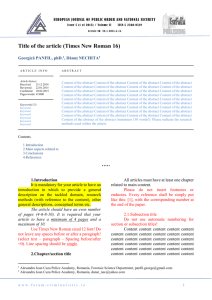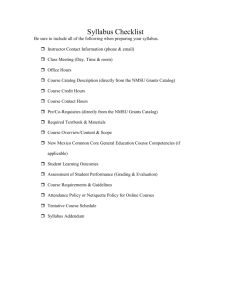Vocabulary List Research Reliable Resources
advertisement
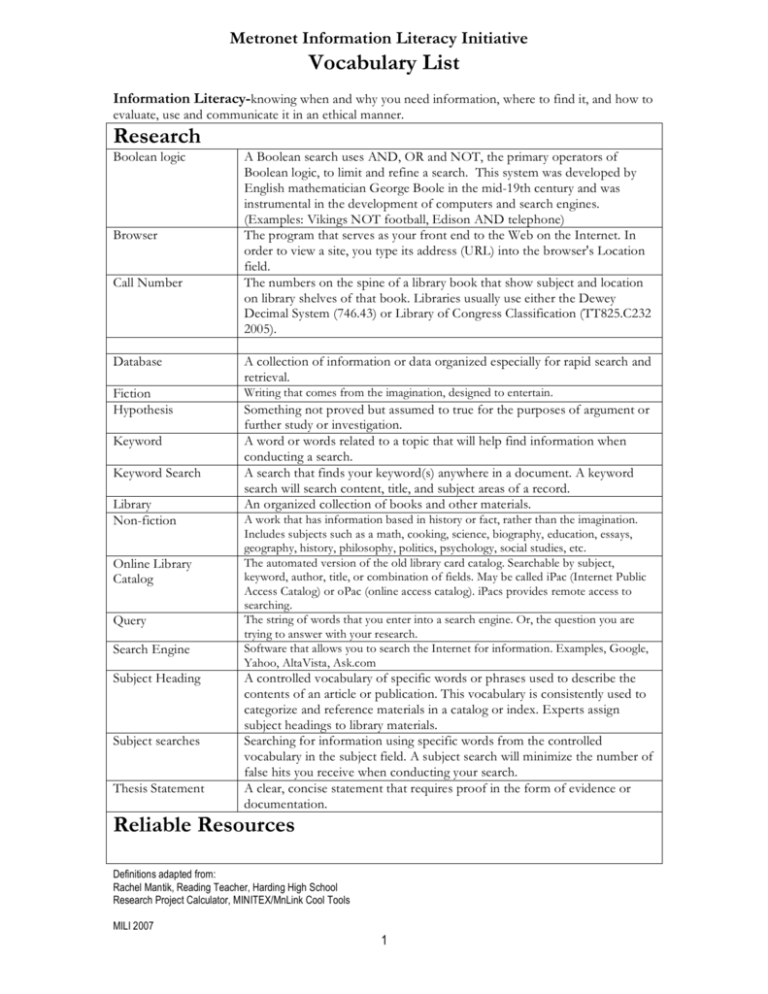
Metronet Information Literacy Initiative Vocabulary List Information Literacy-knowing when and why you need information, where to find it, and how to evaluate, use and communicate it in an ethical manner. Research Boolean logic Browser Call Number A Boolean search uses AND, OR and NOT, the primary operators of Boolean logic, to limit and refine a search. This system was developed by English mathematician George Boole in the mid-19th century and was instrumental in the development of computers and search engines. (Examples: Vikings NOT football, Edison AND telephone) The program that serves as your front end to the Web on the Internet. In order to view a site, you type its address (URL) into the browser's Location field. The numbers on the spine of a library book that show subject and location on library shelves of that book. Libraries usually use either the Dewey Decimal System (746.43) or Library of Congress Classification (TT825.C232 2005). Database A collection of information or data organized especially for rapid search and retrieval. Fiction Hypothesis Writing that comes from the imagination, designed to entertain. Keyword Keyword Search Library Non-fiction Online Library Catalog Query Search Engine Subject Heading Subject searches Thesis Statement Something not proved but assumed to true for the purposes of argument or further study or investigation. A word or words related to a topic that will help find information when conducting a search. A search that finds your keyword(s) anywhere in a document. A keyword search will search content, title, and subject areas of a record. An organized collection of books and other materials. A work that has information based in history or fact, rather than the imagination. Includes subjects such as a math, cooking, science, biography, education, essays, geography, history, philosophy, politics, psychology, social studies, etc. The automated version of the old library card catalog. Searchable by subject, keyword, author, title, or combination of fields. May be called iPac (Internet Public Access Catalog) or oPac (online access catalog). iPacs provides remote access to searching. The string of words that you enter into a search engine. Or, the question you are trying to answer with your research. Software that allows you to search the Internet for information. Examples, Google, Yahoo, AltaVista, Ask.com A controlled vocabulary of specific words or phrases used to describe the contents of an article or publication. This vocabulary is consistently used to categorize and reference materials in a catalog or index. Experts assign subject headings to library materials. Searching for information using specific words from the controlled vocabulary in the subject field. A subject search will minimize the number of false hits you receive when conducting your search. A clear, concise statement that requires proof in the form of evidence or documentation. Reliable Resources Definitions adapted from: Rachel Mantik, Reading Teacher, Harding High School Research Project Calculator, MINITEX/MnLink Cool Tools MILI 2007 1 Authentic Editorial Evaluate Internet Directory Popular Sources Primary Resources Scholarly Sources Secondary Sources Valid Verify Not false or imitation An expression of opinion, as in a newspaper editorial To determine the value of something A list of Web sites selected for their authenticity by editors, librarians, and/or subject experts. (www.IIL.org) Articles written for the general public and published in general interest or consumer magazines (Time, Sports Illustrated) Original documents, artwork, letters, writings Articles written by academic or other experts for other experts. Published in scholarly journals, which require articles be peer-reviewed for accuracy and authenticity. Writings about original sources, such as analytical, interpretive writings about a diary or artwork. Well-grounded, justifiable information. To establish the truth Responsible Use Bibliography Citation Cite Copyright Fair use Footnote Plagiarism Public Domain Style manual A list of the books and other resources referred to in a book, paper, or other text. To quote from another author’s work To give credit to the creator of an original work The legal right to reproduce, publish, or sell the contents and form of a literary, musical, or artistic work. All works protected by copyright require permission of the creator for their use. Allowable use of limited amounts of a copyrighted work for the purpose of criticism, comment, news reporting, teaching, scholarship, or research. A note of explanation, reference, or comment in a paper, book, or other document. Usually placed at the bottom of a page, below the text. Endnote is similar, but usually placed at the end of an article, book chapter or entire book. Using the ideas, language, or work of another person without giving her/him credit Art, literature, photographs, or music that us available for use by anyone, without cost, because the material has not been copyrighted or because the copyright has expired A reference book that outlines common rules of usage for writers. Different organizations have different rules for how works should be cited, how abbreviations employed in writing, formatting of documents, and other conventions. The rules are documented in style manuals. Classic examples are Elements of Style, and The Chicago Manual of Style, Links to many style manuals: http://www.biblioscape.com/styleMan.htm Definitions adapted from: Rachel Mantik, Reading Teacher, Harding High School Research Project Calculator, MINITEX/MnLink Cool Tools MILP 2007 2
